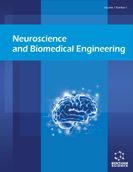Abstract
Background: What is neural memory? How does it differ from binary encoded, computer memory? Attempts to model brain function using contemporary computer hardware and (information) theory suggests the need for a new paradigm. The disparity between (dry) electronic devices that “compute” in binary format (n=2) and biologic (wet) neural nets that mentate in “multinary” format (i.e. n>10), reflects drastically differing recall systems. Focusing on codes, we discuss Morse and Braille codes and note that a binary bit (0 /1) cannot encode a psychic (emotive) state. Between 0 and 1, there is no code for “emotions”.
Hypothesis: “Form follows function”. There are no “naked neurons”. Neuron morphology (extended shape, large surface area) implies intimate contact with its surroundings. Based on observed morphological and biochemical evidence, we propose a tripartite, biochemical process for encoding neural memory, whereby the surrounding “neural extracellular matrix” (nECM), functions as a “memory material” to encode and store cognitive units of information (cuinfo). The dopants (>10 neuro-metals, >90 neuro-transmitters (NTs)) within vesicles ejected by neurons into the nECM, provide the neuron with Avogadro scale (A=6x10 23 ) “dopants” for encoding emotive memory. Calculations using experimentally determined (molar) levels of metals and NTs, reveal astronomical coding options and capacity.
Conclusion: Neurons collectively generate memory, using both electrodynamic and chemodynamic signals. The NTs link physiology to psyche, functioning in memory as signifiers (enciphers) of emotions. An algorithm, blueprint, calculus, fractal, mimetic or simulation that ignores {neuron-nECM-NT} interactions, cannot emulate mental processes of the brain, recalling emotive memory to survive.
Keywords: Neural memory, code, cognitive information, mentation, tripartite mechanism, cuinfo, feelings, emotions.
Graphical Abstract
 27
27

